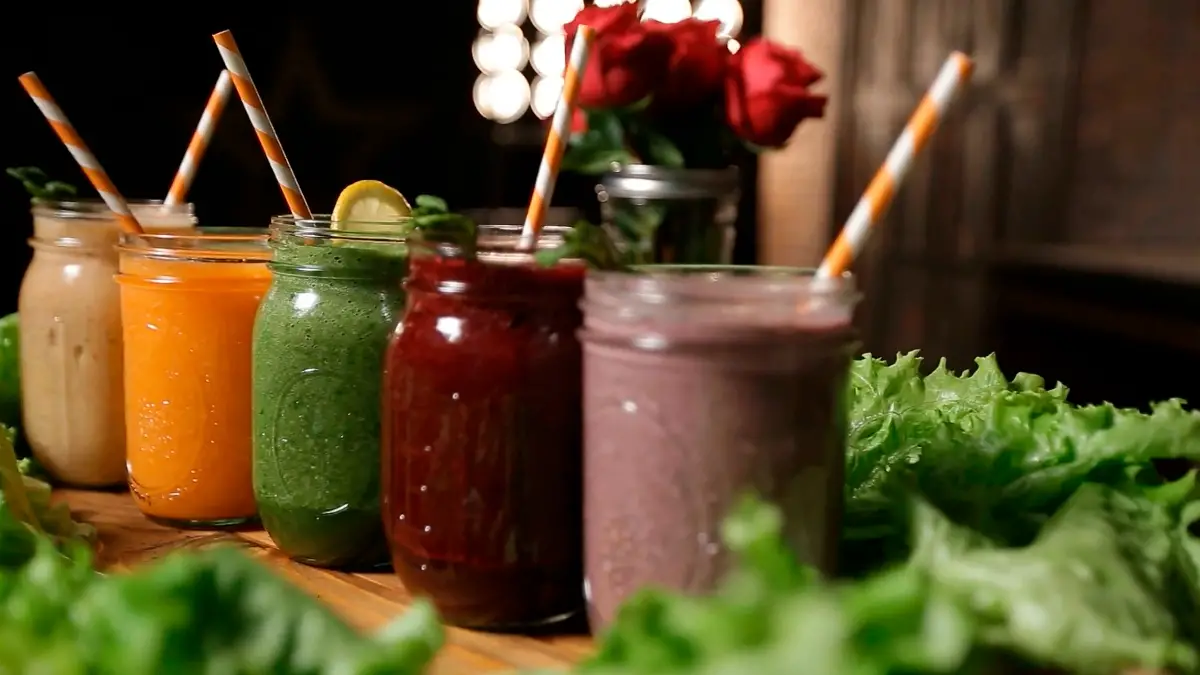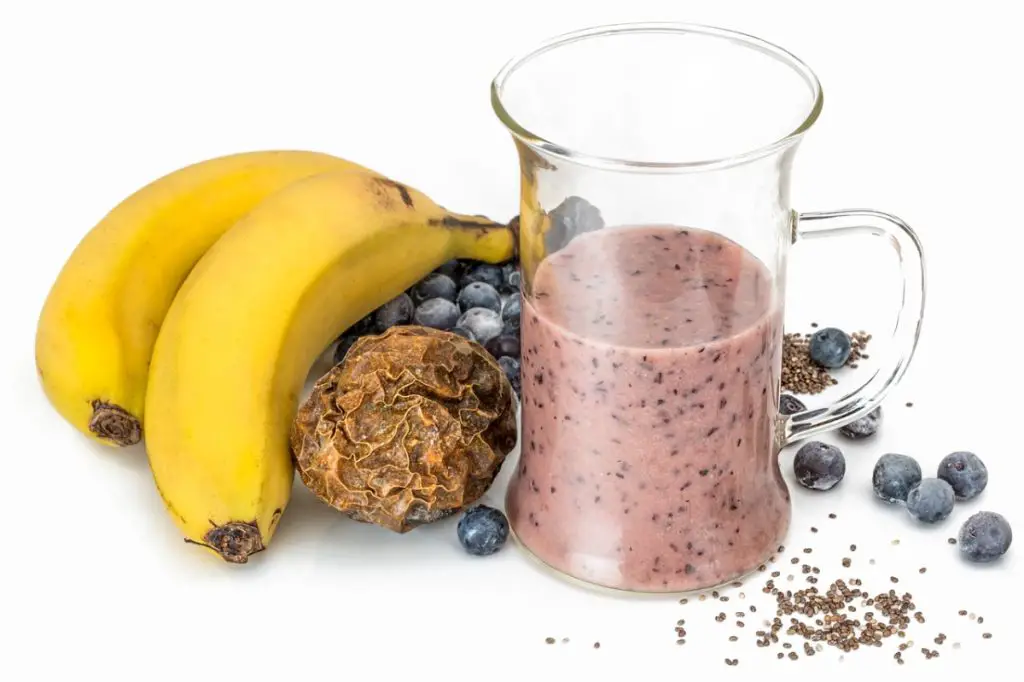The world of brewing is seriously leveling up its creativity.
Brewers are like mad scientists now, mixing up flavors and techniques in ways that would make our grandpas’ heads spin.
One trend that’s caught our attention is the smoothie sour.
Imagine this: your favorite tangy beer meeting the velvety goodness of a smoothie.
Intriguing!
In this post, we will discuss the basics of smoothie sours and show you how to make your own.
Let’s get to it.
What is a Smoothie Sour Beer?

Smoothie sour beers are also known as pastry sours.
They’re like the funky cousins of those tangy kettle-soured beers — think Gose and Berliner Weisse.
These brews made their big comeback in the early 2010s.
Around the same time, crafty brewers had an “aha” moment and discarded all the usual beer playbooks.
They started throwing all kinds of offbeat stuff into the classic brews we know and love like they were whipping up some crazy dessert experiment.
And they succeeded!
The result?
A unique sour ale that’s all about intense fruitiness.
They add unique ingredients like herbs, spices, baked treats, candy, and even a dash of lactose for that creamy twist!
The Process of Making a Smoothie Sour Beer
A smoothie sour is an advanced-level brew.
So before we drop the general recipe, let’s first understand the work that goes into the entire process.
Making the Base
A smoothie sour needs a foundation; the kettle sour approach is the go-to method.
These styles bring the proper characteristics minus any elements that could mess with fruity or creamy ingredients.
Here are the ideal brew bases:
Kettle Sour
The kettle-sour technique is a breeze: brew, transfer wort, add Lactobacillus for acidity, and rest for days.
Boil to halt Lactobacillus, ferment with yeast — voila, kettle-soured beer!
Berliner Weise
This sour beer hails from Germany and gained popularity in the 16th and 17th centuries.
With around 3%-4% ABV, it boasts gentle tartness, fruity notes, and a dry finish.
It’s often served with fruit syrup, like raspberry or woodruff, to add sweetness and flair.
Gose
Gose, a traditional German beer style predating Pilsner, has roots in the 15th-century town of Goslar or the Gose River.
Modern versions use kettle-souring.
Cloudy and unfiltered, Gose is a yellow wheat beer with coriander and salt flavors, offering a crisp, low IBU profile and gentle dryness.
Adding Fruit
Now that we’ve covered the base beer style, let’s dive into the exciting part — how to infuse it with those fruity flavors!
Fresh Puree
Using fresh fruit puree sure has its perks.
It’s a breeze for liquids to soak up its flavor and settle at the bottom, sidestepping the fruit-floating problem.
Those can trigger mold and mess with the beer’s surface.
But watch out for potential beer spoilers like bacteria and wild yeast!
Aseptic puree
Some brewers take the extra step of heat-pasteurizing the puree to eliminate contaminants.
But, acquiring aseptic puree is pretty easy since it’s widely available in the market.
Chopped Fruit
Timing is the name of the game when it comes to adding fruit to a kettle-soured beer.
Kettle sours do their thing way quicker than mixed fermentation brews.
So, when your kettle sour finishes in about two weeks, it’s time to add the fruit.
Adjuncts
Beyond fruits, you could add ingredients like lactose, adding sweetness and texture.
You can also try marshmallows, vanilla, cinnamon, and more. Just think dessert!
These extras play backup, adding depth to the fruit flavors you’ve already developed.
Some brewers even experiment with baked goods!
After primary fermentation, you must let the beer sit in a secondary container.
The adjuncts are incorporated here, mingling with the base beer for flavor.
Unlock the fruity secrets of beer brewing – Dive into these posts for a deeper sip of knowledge!
How to Make a Smoothie Sour Beer

Step 1: Choose your base beer style.
Decide on your foundation!
We suggest Gose because of its salinity and coriander seeds, enhancing the final product’s flavor and structure.
The important thing is to choose a style with enough body to withstand souring, fruit, and other adjuncts during maturation.
Step 2: Brew your base.
Time to get brewing!
The final ABV goal is around 8%-10% to handle dilution with fruit later.
Step 3: Sour and boil.
After mashing, sour the wort with Lactobacillus to a pH of about 3.4-3.5.
Boil the soured wort for around an hour to eliminate the souring bacteria.
This is when you can experiment with lactose or marshmallows.
Then, at the end of the boil, introduce hops, coriander, and salt to target around 10-15 IBU.
Step 4: Fermentation and Adjuncts
Cool the wort and introduce yeast capable of handling higher alcohol levels.
After the first round of fermentation, transfer the beer to a conditioning vessel.
Then, add your adjuncts like coconut, crackers, vanilla pods, etc.
Let it sit for another week in secondary.
Step 5: Dilute with fruit puree
Move the beer to conditioning tanks, then dilute it with your chosen unfermented fruit puree.
Aim for a ratio of around 40% fruit to 60% beer.
Step 6: Carbonate.
Force carbonate the beer.
Due to the beer’s thickness, carbonation will be gauged by feel, not CO2 readings.
Step 7: Bottle your beer
It’s time to package the fruits of your labor. It’s ready for consumption!
FAQs
A smoothie sour beer is a unique concoction that begins as a sour beer base.
Then, it goes all out by mixing in generous amounts of unfermented fruit puree.
The result?
A brew with a natural fruit smoothie’s texture, flavor, and look!
The usual suspects are bacteria buddies Lactobacillus and Pediococcus.
Their fungal friend, Brettanomyces, can also lend a hand in the acidity department.
Another option is adding fruit, directly bringing in citric acid for that tart punch.
Adding fruit during boiling pulls out the flavors and aromas from the fruit to some extent.
But adding fruit after fermentation helps keep those delicate flavors that might get lost during boiling.
As we’re concluding our smoothie sour beer journey, make sure you catch these intriguing posts!
Crafting Your Raspberry Sour Beer.
Brewing Pineapple Beer at Home.
Conclusion
Crafting a smoothie sour is a thrilling journey where creativity shines!
Starting with a base beer, infusing unfermented fruit puree, and playing with adjuncts delivers a lip-smacking delight.
If you’re looking for something thick, fruity, and satisfying, a smoothie sour beer is worth trying at least once in your homebrewing career!